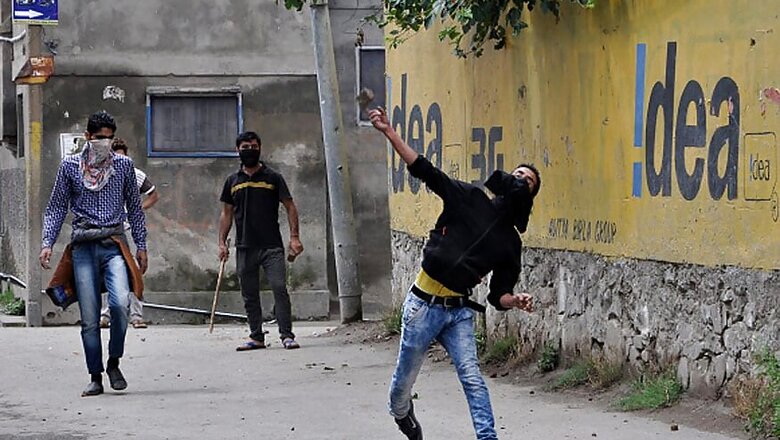
views
New Delhi: The past 365 days, since Hizbul militant Burhan Wani was killed in an encounter, have tested the resolve of everyone in Kashmir and that includes the security forces posted there. For the security forces, 2016 and 2017 so far, have been especially hurtful for two reasons. First due to the number of fatalities incurred – a total of 88 security personnel died in 2016, which is the highest number in the last eight years. This year alone, 40 personnel have lost their lives.
Second challenge is the changing nature of the conflict. As a senior police officer told News18, one notable difference in violence seen during post July 2016-17 period was the involvement of local people. "People earlier used to run away hearing gunshots. Now we have situations when we have to prevent people from running towards the gunshots… towards the site of the encounter to pelt stones at us and help militants escape."
To understand this increasingly dangerous scenario for the forces deployed in J&K, News18 reached out to two CRPF personnel who have been posted in Kashmir for years and have seen a lot of action, and therefore understand the changing nature of the conflict.
Head constable Manish Kumar from CRPF’s 180 battalion, has spent a lot of time in Kashmir, having been deployed back in 2010.
Right now he has been deployed in what perhaps is the most dangerous location in Kashmir – Tral. This is the birthplace of Hizbul militant commander Burhan Wani and his potential successor Sabzar Bhat, and for this reason has seen severe clashes between locals and security forces. Both these militants were gunned down last year.
“Before Burhan Wani’s death, in 2016, we never saw the sort of stone-pelting that we are witnessing these days. There has been a marked increase in the incidents of stone-pelting here. A lot of local boys have joined militancy,” Kumar says.
Between 2010 and 2016 the paramilitary forces didn’t carry out as many encounters as they are doing right now. “From 2016 the encounters have picked up substantially. We also have achieved a lot of success,” Kumar says.
But the difference between earlier encounters with militants and security forces is the presence of civilians near the encounter sites, says Kumar.
“See the militants charge at us with an intention of killing us or getting killed. So we know that with them it’s a straight gun battle. But then we see locals rallying support for the militants and helping them escape. Our problem is that we have been trained to fight the militants not the public.”
Having spent so much time in Kashmir, Kumar has come to understand the locals better, he says.
“Just last week an army jeep overturned not far away from where I was posted. But before we could reach and help the army officers out, the locals rushed to them and helped the officers and put the vehicle back on track. And I have seen locals behave like this earlier several times also, so I wasn’t really surprised,” he says.
When asked about the security force excesses in dealing with public, Kumar says, “This is a wrong notion. When we are hit by stones, all we can do is fire in self-defence.”
Do people at his house, back in Rajasthan’s Jhunjhunu district, fear about Kumar’s life often?
"Ghabraate to hain magar hausla bhi dete hain. [They are anxious at times but also reassuring and inspiring me.]"
CRPF Sub Inspector Sandeep, from the 45th battalion, was quite surprised when he was posted from Jharkhand, where he was part of anti-Naxal operations, to Kashmir.
“There we had intel on Naxals and used to carry out operations in jungles for days together. But here in Kashmir the conflict is very different. On one side you find yourself aiming and shooting at the militants and ducking their bullets, but on the other side you suddenly find yourself being pelted with stones,” Sandeep says.
Being usually part of the outer cordon in an anti-militant operation, the innermost cordon being army’s, CRPF faces the greatest brunt of stone-pelting from locals.
“A lot of my colleagues have been injured. My commanding officer was injured in a recent operation we conducted at Hajin, so was my constable. One has to divert his attention constantly from one side to the other, and it’s not easy in such stressful conditions. Unke gusse ko hum sehen bhi karte hain aur kabhi kabhi force bhi use karni padti hai.”
Militancy is increasing on ground, he says. But such phases have come and gone in Kashmir earlier also, he adds. This too shall pass, he says, hoping for better times in the valley.



















Comments
0 comment